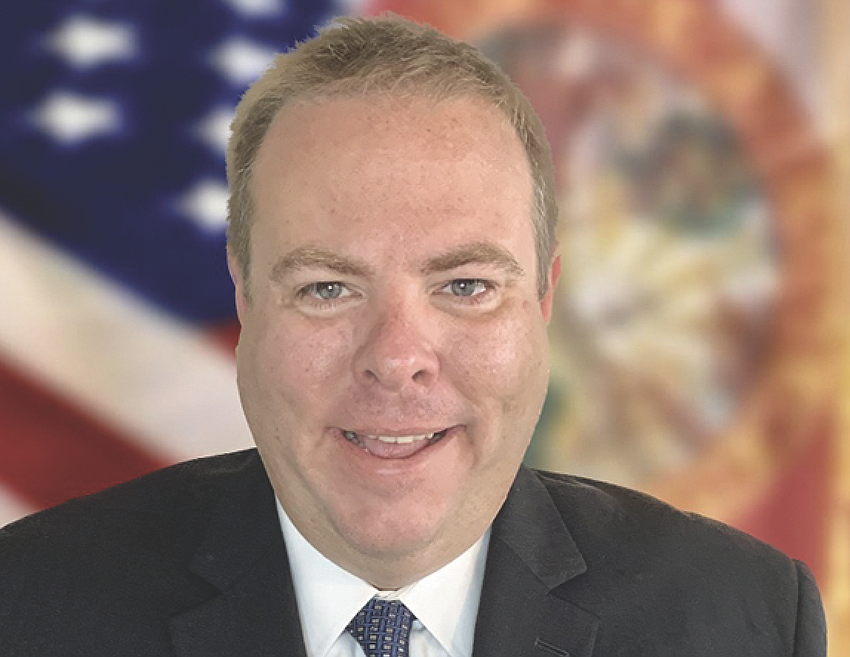 Freedomz - stock.adobe.com
Freedomz - stock.adobe.com
In Conage v. United States, 346 So. 3d 594 (Fla. 2022), a groundbreaking shift in statutory interpretation emerges, revolutionizing the role of the canons of statutory construction (canons) in courtrooms.
Departing from the previous limiting ambiguity-first approach of Holly v. Auld, 450 So. 2d 217 (Fla. 1984), the Conage ruling emboldens courts to unleash the full potential of the canons, enabling a more nuanced and profound exploration of statutory interpretation.
This momentous departure from Holly heralds a new era of richer and more insightful analyses of statutes, fundamentally transforming the jurisprudential approach to comprehending a statute’s text.

Before Conage, the Holly decision restricted the courts’ ability to employ the canons until the statute’s meaning seemed unclear or susceptible to multiple interpretations.
However, in Conage, the court reevaluates its prior stance in Holly.
Acknowledging the shortcomings of their earlier approach to statutory analysis, the court proclaims that “following this maxim often leads the interpreter to focus on a disputed word or phrase in isolation; the maxim also leaves the interpreter in the dark about how to determine whether a particular word or phrase has a clear meaning.” Conage, 346 So. 3d at 597.
In a significant shift, the court now mandates that interpreters must “exhaust ‘all the textual and structural clues’ that bear on the meaning of a disputed text.” Id. at 598 (quoting Alachua County v. Watson, 333 So. 3d 162, 169 (Fla. 2022)).
This decision led to revitalization of several canons, including the prior-construction canon discussed here.
The prior-construction canon is a crucial part of legal interpretation. It asserts that the interpretation of statutory language should be consistent across different courts within a jurisdiction.
According to Scalia and Garner in “Reading Law: The Interpretation of Legal Texts” 253 (2012), if a statute uses words or phrases previously interpreted by the jurisdiction’s highest court, these should be interpreted in line with the established interpretation. (p. 253).
As noted by Scalia and Garner, this canon has its roots in the English court ruling of Ex parte Campbell. Id. It stipulates that repeated use of specific phrases, which a superior court has judicially interpreted, indicates an intentional application of the established interpretation. Id.
Scalia and Garner point out that the Supreme Court in Shapiro v. United States, 335 U.S. 1, 16 (1948), endorsed the concept that if a legislative body reuses language from a previous act in a new statute, it’s assumed to adopt the judicial interpretation given to that language. This interpretation thus becomes integral to the new law.
Despite its use, critics argue that the canon can validate erroneous interpretations.
Scalia and Garner counter this by suggesting that a careful application of other interpretative rules can overcome this issue Scalia & Garner, supra at 254.
The prior-construction canon has a long-standing history in federal law, with numerous applications used by the U.S. Supreme Court. However, its usage in Florida law has been sparse, only recently experiencing increased adoption.
In 2015, Florida’s 4th District Court of Appeal invoked the prior construction canon in State v. Losada, 175 So. 3d 911, 914 (Fla. 4th DCA 2015), to interpret the meanings of multiple child exploitation statutes.
The court used the canon to determine the number of counts a charging document could contain against a defendant. Id. These statutes were akin to a prior statute within the same realm of misconduct in which the court interpreted the legislature’s use of the word “any” to denote a single offense. Id.
This interpretation, guided by the prior-construction canon, applies equally to understanding a subsequent statute’s use of “any,” which it found to imply a single prosecution. Id.
Fast forward to 2017 when the 2nd District applied the canon in In Re Guardianship of Leon Bloom, 227 So. 3d 165, (Fla. 2d DCA 2017).
The court determined the meaning of Florida Rules of Appellate Procedure rule 9.170 to be the same as the interpretation of rule 9.110 due to parallel language. Id.
The court was influenced by a previous Supreme Court decision, observing that “[w]hen judicial interpretations have settled the meaning of an existing statutory provision, repetition of the same language in a new statute is presumed to incorporate that interpretation.” Id. (quoting Bragdon v. Abbott, 524 U.S. 624, 645 (1998)).
Further evidence of the canon’s use emerged in Safeco Insurance Company of Illinois v. Heikka, 294 So. 3d 324, 332 (Fla. 4th DCA 2020).
The court used the prior-construction canon to interpret the meaning of “reasonable attorney’s fees.” The court consulted a previous Florida ruling, Florida Patient’s Compensation Fund v. Rowe, 472 So. 2d 1145 (Fla. 1985), in which the Florida Supreme Court used the federal lodestar approach to interpret “reasonable attorney’s fees.”
Given that the statute in Safeco also concerned calculating “reasonable attorney’s fees,” the court found it appropriate to use the same approach. In both cases, the similar phrasing in the statutes led the court to apply the prior construction canon and adopt the lodestar approach.
While the prior-construction canon has a long-established presence in federal law, its adoption in Florida law is more recent. Its versatile application across various legal sectors suggests a continued growth in usage.
Given the shift in Florida’s judicial landscape, particularly considering the Conage ruling, the stage seems set for the increased use of the prior-construction canon and other canons in the Sunshine State’s legal environment.
The student who helped me write this article is Maria Gaglio from Stetson.
Hillsborough County Court Judge Michael Bagge-Hernandez was appointed to the bench in 2019 and reelected in 2022.